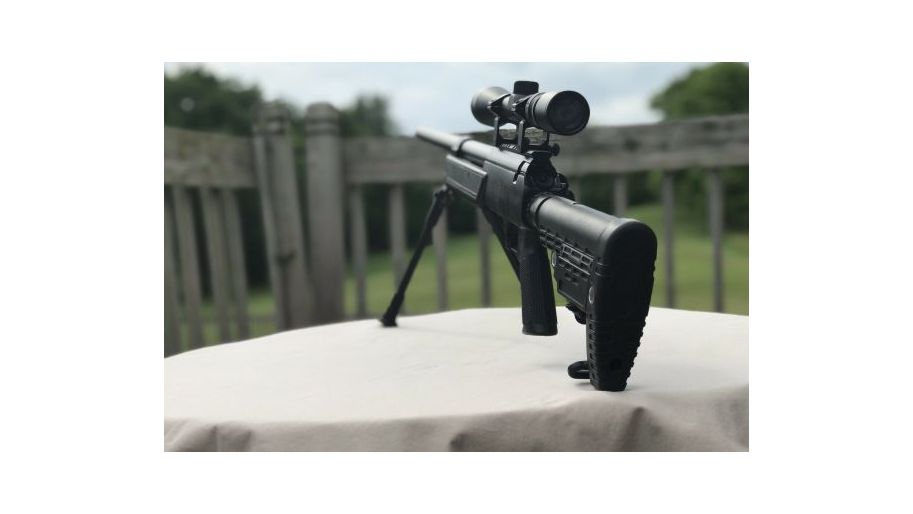Rifle Scopes Basics: How They Work
In this guide, I’m going to show you how a rifle scope works. I’ll explain everything from objective lens to magnification. In short: If you’re looking to understand how a rifle scope works, then you’ll love this guide. Let’s get started!
What is a riflescope?
An optical device that allows you to magnify your target. Riflescopes come in all sorts of styles, price points, construction, sizes and configurations. For example, the best rifle scopes for AR-10 would be different than the best AR-15 scope. And that’s why it’s important to understand how a scope works: so you can choose the best scope for your firearm. That said, the most important parts of a rifle scope are the lenses -- more specifically, the objective lens and ocular lens. Let’s break down each one, starting with…
Objective Lens
The objective lens is the larger lens located at the front of the scope. Its purpose is to transmit light to the ocular lens. When the light passes through the objective lens, it’s sent to the erector lens which then flips the image and becomes magnified by the magnifying lens. When that happens, the light is then passed to the…
Ocular Lens
The ocular lens is the smaller lens located at the rear of the scope. The function? To make a visible sight picture to the shooter. Both lenses -- objective and ocular -- can be coated with several different finishes. Lets quickly cover the different types of lens coatings.
Lens Coatings
There are 4 different types of coatings:
- Coated: One layer of coating on one surface.
- Fully-Coated: One layer of coating on ALL glass surfaces.
- Multicoated: Multiple layers of coating on one surface.
- Fully-Multicoated: Multiple layers of coating on ALL glass surfaces.
So we’ve covered lens and coatings. But you might be thinking: what is that aiming point when looking through a scope? That’s called a...
Reticle
A reticle is your crosshair. The reason for a reticle is so that the shooter knows exactly where to aim. There are a few different reticles like Duplex, Mildot, BDC, SPR and others -- all tailored to its own purpose. Let’s quickly explain the most important:
- Duplex: The simplest and fastest reticle. (Which could explain why it’s so popular).
- Mildot: Very similar to the duplex reticle, but differentiates by helping estimate the target’s distance.
- BDC: Also known as Bullet Drop Compensator, it helps adjust for bullet drop. (Mostly used by long-distance shots).
Now, a reticle can be mounted either at the front of the magnification lens (FFP) or at the rear (SFP). Let’s break down each one: First Focal Plane (FFP) - A first focal plane reticle means that the crosshairs will CHANGE in size when adjusting through different magnifications. Second Focal Plane (SFP) - A second focal plane reticle means that the crosshairs will stay the SAME size regardless if you change the magnification.
Fixed Power vs. Variable Power
A fixed power riflescope means that it works at only one power. For example: if the scope says “3x32mm”, that means it’s magnified at 3 times closer than the naked eye. On the other hand, a variable power riflescope means that you can adjust through various powers. For example: If the scope says “3-7x32mm”, that means you can adjust the magnification setting from 3x to 7x. Easy enough? Cool. But there’s a problem: when switching magnification settings, you might run into…
Parallax
Parallax isn’t good at all. What happens is whenever you change the position of your eye, the crosshair will slightly change positions. This can negatively affect your shot and cause blurriness. Fortunately, there are a couple of ways to kill parallax:
- Factory-Set: Parallax adjustment is already built-in the scope.
- Adjustable Objective: A ring that corrects parallax.
- Third Turret: A turrets that remove parallax.
Windage and Elevation Turrets
The windage turret (located on the side) allows you to adjust the horizontal settings (left to right) on a scope, while the elevation turret (located on top) changes the vertical settings (up to down). Now, whenever you turn the turrets, usually you’ll hear an audible click sound. One-click generally means ¼ MOA. What’s MOA? Let me explain...
Minute of Angle (MOA) vs. Milliradian (MRAD)
MOA (which stands for Minute of Angle) is usually set at around 1-inch @100 yards. In other words, you should be able to hit a 1” target at 100 yards. Of course, that’s not taking into account wind drift and other factors that could disrupt accuracy. To adjust for those two factors, use your windage and elevation turrets. On the other hand, MRAD (which stands for Milliradian) is usually set around 3.6-inches at 100 yards. You might be wondering: Which adjustment system should I use? Here’s the truthful answer: either one. They’re pretty much the same system (just like MPH and KPH). So choose an adjustment system your buddies use. If you don’t have buddies, then just opt-in for MOA -- it’s easier and more popular. Once you’ve selected your adjustment system, your rifle scope should be all ready to go!
Now It's Your Turn
I hope this guide showed you how a rifle scope works. Now I’d like to turn it over to you: Do you understand how a rifle scope works now? If so, let me know by leaving a quick comment below.









